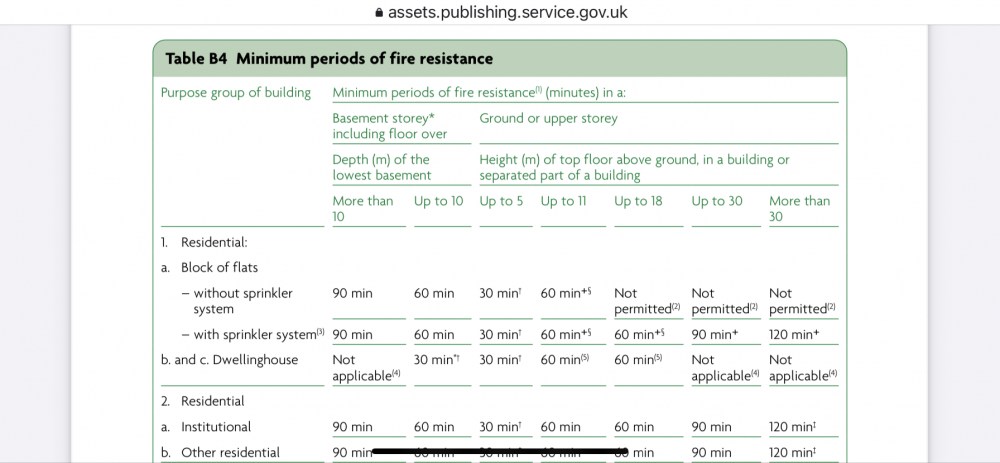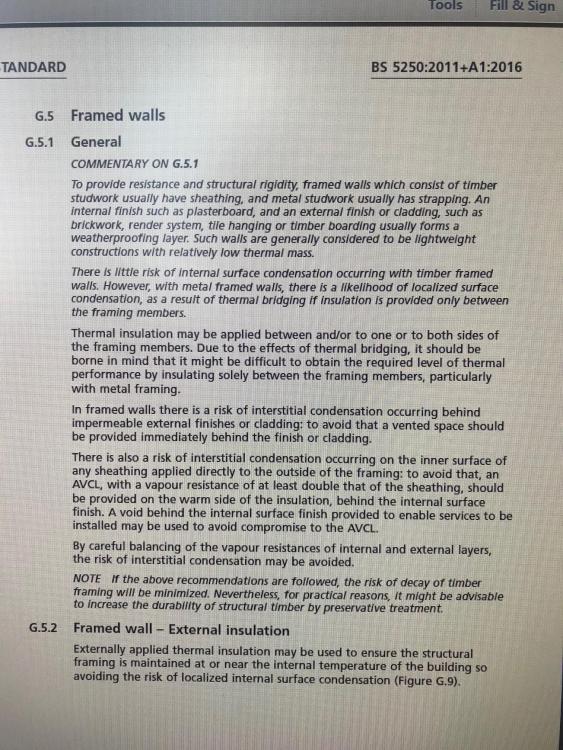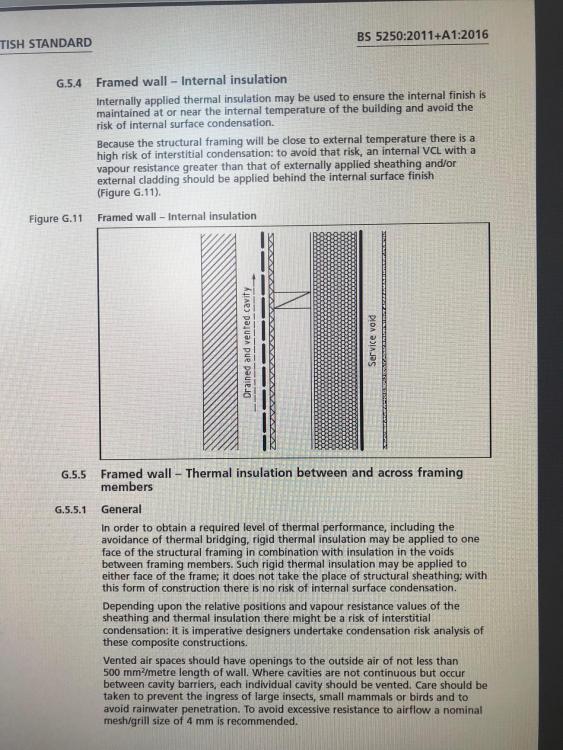
Ian
Members-
Posts
751 -
Joined
-
Last visited
-
Days Won
3
Everything posted by Ian
-
Yes, it’s okay just to have it in the floor zone but see my comments in the first post I made in this thread, and as with anything to do with Building Regs it depends on the opinion of the Building Inspector.
-
The requirement for fire protection is based on height (for English regs) as this table in Appendix B4 of Part B
-
Yes, that’s okay provided the ceiling, floor and perimeter walls are all fire rated however my preference on our commercial projects is for beams to have their own fire protection - the reason is that, over time when maintenance is needed to items that penetrate the ceiling such as lights, the maintenance staff rarely put things back the way they should in order to maintain the integrity of the fire rated ceiling eg when replacing lights with fire rated hoods.
-
Yes you can sue in Tort for negligence but it’s much rarer than cases involving breach of contract. Good luck.
-
You’ve got absolutely no chance of successfully suing the engineer if you didn’t have a contractual relationship with him/her.
-
You should write to the engineer stating your grievance together with a request that they pay the costs that you’ve incurred. A condition of the engineer’s professional indemnity insurance will be that they can’t admit liability and must notify their insurer of the claim . The insurer will appoint a specialist solicitor who will formulate a response for the engineer to put back to you. The fact that the institutes complaints committee has already found against the engineer will be a big help in convincing the insurer to pay up. Depending on the amount of the claim it may be less than the amount of the insurance excess in which case the engineer will have to foot the whole amount of the claim.
-
Is insulation *outside* studs considered unconventional?
Ian replied to lineweight's topic in Timber Frame
With regard to condensation risk here's a couple of extracts from the current version of BS 5250: 'Code of practice for control of condensation in buildings' Some of the key points are: Page 55: A VCL with a vapour resistance of at least double that of the [external] sheathing should be provided on the warm side of the insulation. Page 92: If different types of insulation are used in successive layers, the layer with the greater vapour resistance should always be placed closer to the heated interior. -
Typo!...That should read Dulux!
-
Deluxe Satinwood is great. It’s water based so really easy to use and it goes on great. It’s got a satin mid-gloss look
-
Regs extract below is for England from Approved Doc E, page 65 https://assets.publishing.service.gov.uk/government/uploads/system/uploads/attachment_data/file/468870/ADE_LOCKED.pdf
-
Well done - you must be delighted!
-
@puntloos It's an interesting question, and one that I gave some thought before building my last house using timber frame. My normal preference would be for brick and block traditional construction however the site I was building on was in a remote part of N Wales that lent itself to timber frame construction. It was very difficult to access up a steep single-track and partially unmade road, the site is on an exposed hillside and has a short construction weather window with snow & ice making access impossible for good chunks of the year. The ground has clay in it and it turns claggy in the heavy rain of that part of N Wales which can make the movement of heavy building materials difficult. I chose a local timber frame manufacturer who was used to dealing with the difficult access and weather conditions. They pre-fabricated the frame in sections that were suited to the site conditions. We agreed that they would start work on site in late Spring and they got the build weather-tight after just 2 weeks on site. I'm very happy with it and 4 years on I still think I made the right choice of construction method for that particular site. The potential disadvantages of timber frame in my view are that timber can rot which makes the construction detailing more important than for a masonry build. I'm an architect and designed the house with traditional pitched roofs to an uncomplicated design with outboard gutters. The biggest risk with timber frame construction is if you get water leaks into the structure from either poor basic design or construction detailing. EG: there's a fashion amongst some architects for putting the gutters inboard of the external wall which I've always thought was a crazy idea and asking for trouble - the kind of thing in the photo below. It's done to make the building look better but seems like a bizarre thing to do when we all know how often gutters get blocked and overflow. If you're into horror stories and want to read about what can happen if you get the design & construction detailing wrong with timber frame construction then have a read about the 'leaky condo crisis' in Canada & NW USA. https://en.wikipedia.org/wiki/Leaky_condo_crisis
-
yes, it's based on the combined exposed internal surface area of walls, ceiling and floor.
-
@MatthewPike the solution to this same problem that I’ve used a lot on fast-track commercial projects is using a liquid surface applied damp proof membrane: https://ardex.co.uk/products/damp-proof-membranes/ it slows the moisture movement from the slab down to a level where it no longer causes a problem to the final floor finish. ....but it’s not a cheap solution.
-
-
Yes, we used money in an offset mortgage savings account to fund our complete new build holiday home. Total build cost was £96k for a 2 bed detached bungalow (already owned the site). edit: I’m self employed and had the offset mortgage on our main house for a long time before deciding to do the self-build. It was ideal as I didn’t need to ask anyone for a loan and full flexible access to the money in the offset account meant it was all very easy.
-
You need to have a good read of Part B of the Building Regulations, particularly Section 11 (page 83 onwards). It's quite a complex set of regs so not easy to simply summarise here but briefly the closer your building is to the property boundary then more of its wall will need to be fire resisting construction. https://assets.publishing.service.gov.uk/government/uploads/system/uploads/attachment_data/file/832631/Approved_Document_B__fire_safety__volume_1_-_2019_edition.pdf
-
Chrome is a much better browser than Safari. About 6 months ago I switched to Chrome on my iPhone after experiencing major problems with Safari and no problems since then.
-
Advice on the process or getting dry rot repaired
Ian replied to Stephen cooper's topic in Roofing, Tiling & Slating
Doesn’t look like dry rot to me. -
@dnb if you're painting you may as well save a shed load of money and use pressure treated timber
-
Have you tried Worktop-Express? (Edit - I used them 3 years ago and they were very good. Also a lot cheaper than Ikea)
-
Firestop! where does it go in a timber framed house?
Ian replied to Triassic's topic in Building Regulations
Yes, you can use a timber batten -
Rain, rain go away (start the build another day?)
Ian replied to Tony K's topic in Costing & Estimating
@Tony K heavy clay soil can be a nightmare in Winter for obvious reasons -
That’s 2nd fix so a valid claim.





